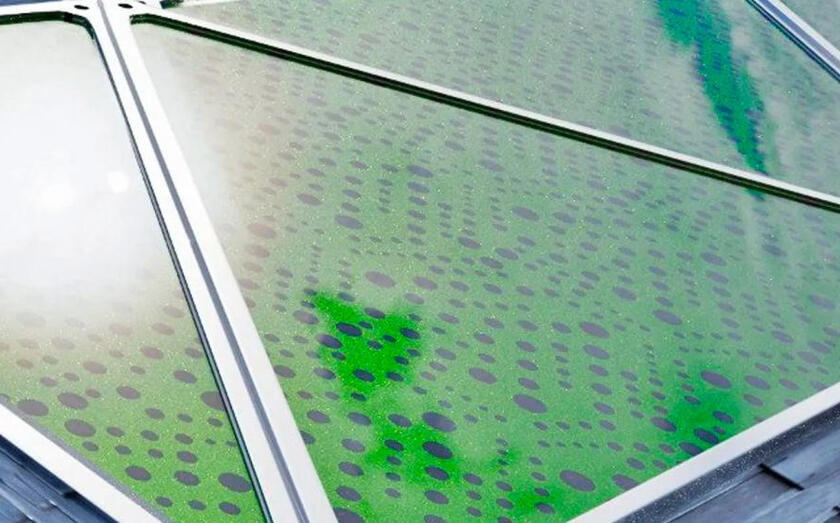Clean Green Electricity.
While the prospect of using plants to generate energy may sound futuristic, the process of turning photosynthesis from algae into energy is already being used. A building in Hamburg, Germany (B.I.Q) is relying on 100% of this type of energy, harnessing the heat from algae panels places around the building and converting it into energy that can be used for heating and electricity. In fact, this system is so effective that the building can provide power to neighboring complexes.This technology is still being experimented with. Greenfluidics, a company in mexico, is currently looking at creating small algae panels that can both be used to harness energy but also to purify air within households. Because of the process of photosynthesis, having the plants absorb CO2 from the environment and release oxygen into the homes could be beneficial for quality of living. Not only that, but these panels take up minimal space and can be placed onto the façade of high-rise buildings, unlike ther renewable energy sources.

Algae panels vs. Solar Panels
That being said, one of the biggest arguments made against this technology is that solar panels have a similar function, build and are at times cheaper than this complex system. While this may be true as of now, algae energy is still a very new concept with a lot of room for growth and experimentation, as seen with Greenfluidics so it is hard to determine if this sentiment will be held down the line. In fact, some meta-analysis has found that algae systems, while unable to compete with solar panels at the start of their life span, will eventually overshoot the panels in terms of energy output and gain revenue after 30 or so years of functioning. While that is a lot of time, we are looking for more sustainable, long-term solutions to current problems.Having this algae system within residential buildings could not only combat climate change by providing buildings with renewable energy, but also heighten residence’s connection to greenery and where our energy comes from. In our day and age, we often lose sight of the source of our household appliances, so being able to reconnect with it could increase that awareness that so many people have lost.
Bioreceptive facades.
A worrying problem in expanding cities is the increase in air pollution and temperatures, impacting human health and enviromental life. Therefore we want to help tackle this issue with the use of bioreceptive concrete on the facade of a building.This layer of concrete is porous, allowing water to be trapped inside for moss, lichen and other micro-organisms to grow. It can also be directly applied onto existing concrete, forming biofilms across the exterior of the building. This poses benefits not only to the residents in the apartments, but also the people in the city.
Reduces Air Pollution
With the amount of respiratory problems that are caused due to poor air quality, it is crucial that we find a sustainable way to clean out the harmful particles in urban cities.Moss acts as an air filter due to electrostatic attraction, so essentially it acts as a magnet to the dust particles in the air, then it digests the dust particles that get trapped, turning it into a biomass. Furthermore, it holds massive carbon capture capabilities. Half a square meter of moss can absorb one kilogram of carbon dioxide! In turn, this gets converted into oxygen due to photosynthesis, improving the air quality within bustling cities.
Thermal Regulation
Moss and similar organisms have an ability to hold massive amounts of water due to their large surface area. The water vapour then evaporates into the environment, providing cooling effects that can lower temperatures by up to 4oC. These micro-organisms present an ideal solution to increasingly hot climates by creating cooler air for a city.Being surrounded by urban greenery and clean air have also been shown to boost people's mental health.
